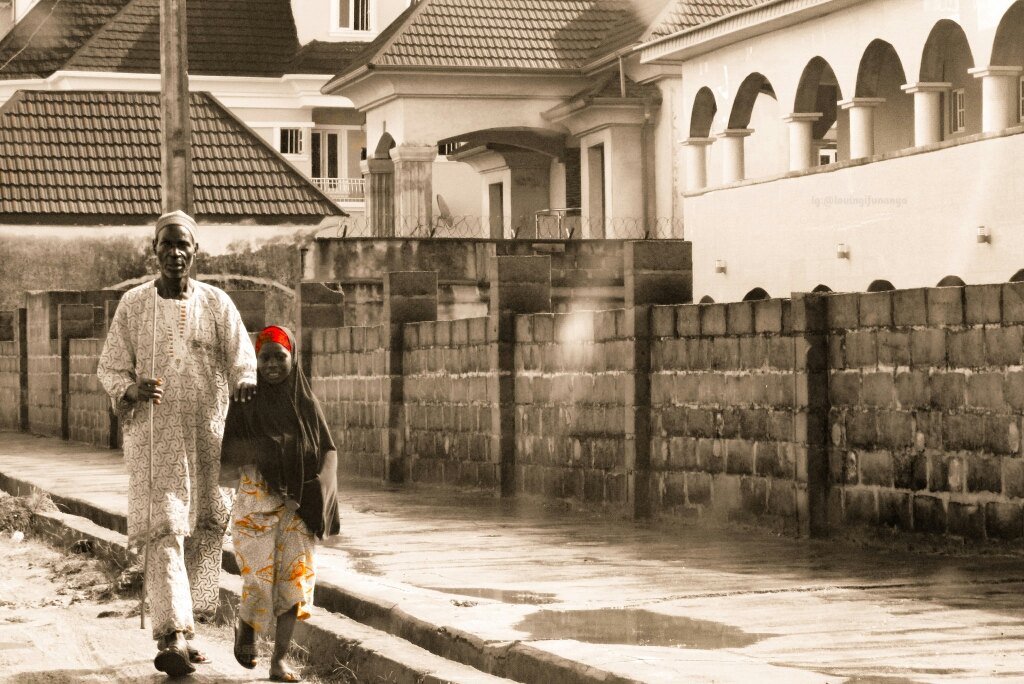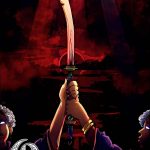
I grew up in a town so uptight and woven against itself from afar and standing upon a precipice you would misjudge it for a shoddy shoelace -its pretensions tower above everything else, yet it is cloaked by a mercantile ambiance that immediately, upon contact, commands approbation. This is the strength of its fraud: its ability to medicate prejudice with an outskirt lined with arrogant but equally beautiful stalls then stunning parasols, a cornucopia of entrepreneurial outfits and fledging enterprises, and the sort of human diversity that not only bewitches but also reaches out in a deceptive embrace to suck you into an abyss that garrotes affection bit-by-bit, in an artful manner, so that in hindsight you would be indebted to its mercies against injustices of its making. Like something of a double entrende, surmising about the town and its implications is courting confusion. One is better fated numbering the stars. Like the insidiousness of a thing deeply personal, its contemptibility is sudden and shocking; it grows on you till that inexorable moment of clarity. Like most things foul, its rot collects then extends from the centre, shoved up way inside and shored up by those who would pretend the decay is never the sum of its worth.
I grew up in a small town whose human relation is as fetid as a sewer; whose systems, however seemingly progressive, seize its demography in a chokehold that betrays decades of classicism. Bigotry. Intolerance. I grew up in a small town in Southwestern Nigeria. A town marked by quiet, capitalist leanings, and the bustle that is a few commotions short of urban chaos. In that town bordered on both sides by equally small and less developed townships, I learnt to identify hate by the proximity between what is less manifest and otherwise. And as I grew, I learnt to earmark expressions and source out their implications in spaces that sought to box into airless corners what arrogance and conceit have designated the living synonym for rejects: the handicaps.
To say a picture is a national biography sometimes betrays arrogance—the arrogating to one’s self that despicable but flattering faux-intellectualism—if not an overambitious connexion. But my first encounter with this image dispelled any suspicion of its allegoric status. As a metaphor it ripples in odd places, revising conditions as old as time itself. As an icon, it wrenches from the holds of memory sins lost to time and the battle for sustenance.
The photograph is mankind at its most susceptible. In it are two principal figures: a male and a female. One precedes a dependent other. This is the picture’s nucleus—retooling and re-situating dependency—not its market value as popular opinion would inform. Neither are the figures’ imports, readily manifested absence relations to other visible textual components. As evident as it is when taxonomy becomes key, the man’s dependability in the picture loses semantics in isolation. Our knowledge of his person ties to our conception of the mechanics of this reality, to the proxemic language between the man, his hands, the stick, and the girl. Once all these are tallied, the figure assumes a relatable identity: one we can readily assume handicap.
The handicap is a man heralded by myths of no commercial worth. He collects into affecting optimism every dawn from the outskirts, the curbside, or dark spaces, familiar consensus marks as uninhabitable or marginal, and sweeps down with stoic hope that betrays a strong conviction in mankind’s aptitude to locate itself in others—the sought undaunted bigotry or modernist intolerance. His destination is amorphous; any query terminates at the inner parts of the city. His resolve is steadfast, almost a stereotype. His, is a nomadic existence harassed by survivalist obligation. And almost exclusive of any distraction whatsoever, his life is shoved forward by raw need into the heart of darkness where assumptions, informed more by ignorance than anything else, scythes his hopes. As the city moves, he moves with it. Once in a while he runs into a benefactor who spares him time and money in return for something: prayers maybe, divine concession to ritual entreaties, or futuristic good fortune. Other times his journey is without meaningful contact. Afterward, his flattening into a series of pre-formed notions is immediate, and goes on indefinitely.
Perhaps in environments defined by squalor, this commodification of human life to suit a capitalist taste accustomed to receiving or giving with an end in sight can be understood, not forgiven. I do not think any philosophy, useful enough to incite one into pardoning self-centeredness. But often times, as is recorded in the picture above, these ones plough their way toward luxury to discover that glitter that is a capricious index of gold. Or how else is such a life to be discovered within opulence?
This returns me to a conversation with the photographer whose input, in hindsight, concludes the context for me. A shot of a blind man and his daughter [we can safely assume this through a semiotic consideration of the assurance in the hands placed on the girl’s shoulder] holding their own in an area populated with the rich and affluent is too ironic a moment, are her words. Although I suppose emphasis on the proximity of things is likewise crucial. For much of what we know of the man is defined by relational difference—to his daughter, who is disabled by association, and the rich men of the Beautiful Gates, who are disabled by the choice to be blind to such ordeal.
A stick in one hand and the other hand placed on the daughter who steers this narrative is enough substance to go on. It announces the attendance of an anomaly. Much more chief than this, it declares unequivocally the subversion of cultural routine: it is the father’s duty to lead an offspring. Anything else is distortion. But a beggar’s life they say is plagued by a dearth of choices. Same goes for the blind beggar in this photograph. This taxonomy is pillared by the postures in which the images have been taken.
How have I come to this conclusion? It is all in the eyes and, this time, hands. The blind’s that is—which is the girl, for that is what she is. It is great wonder how a life can be reduced to a body part. The choice to hold and the way the left hand grabs the stick that must press forth first and dislodge or announce any impediment is also essential to the narrative. The way the right hand is placed on the girl’s shoulders, transferring accountability. And then the girl’s enfolded hands, hidden beneath her short black hijab. Custom says beneath it, is a polythene bag that houses their gains for the day. It is also a statement, culturally coded. The street is a jungle, and the blind is no man’s ward.
I have once heard of a blind man robbed. How is he to narrate his ordeal? And to whom? The whole situation seemed like a travesty to me, like some supernaturally instigated farce of sinister proportions. For all he knew, he could have been lamenting to the same people who dispossessed him of his possession. The matter with the blind is always delicate. But then who robs a blind man? This query immediately redirects to the culture. It has a ready answer: almost everyone.
And this answer comes by way of the notorious structuring that has placed the handicap as a reject, something despicable like offal tossed aside for disposal, only to be regarded in extremely unusual circumstances. It takes me back 15+ years. But then, it is now as it was then. Handicaps are never hard to locate. Populating street corners, their children leech onto you upon exiting cabs. They themselves thrust or reach into your cars to grab for sympathy. Or they chant their sorrows to press-gang you into donating to their cause. The insensitive person rolls up the car window—and you can’t totally fault him. But because hunger is not so easily deterred, they mount territories at motor parks and bus-stops where they are hounded off by vexing conductors who in unusual camaraderie seek to protect clientele from being fleeced of their pennies—as if they aren’t suction pumps themselves. One wouldn’t be considered unforgiving to suppose their acts practical, for while some are greatly in need of aid, others are able-bodied nuisances incommodious with their eternal cries for sustenance and bombardment of prayers, muddling the pool for deserving ones.
This of course is what I grew into: learning first how to discern hoax from the bona fide—there is no procedural logic for this other than a quick scan that pretends to be informed and the unstated hope that the beneficiary isn’t fleecing. When that task grew too heinous and the myths proliferated into the collective psyche, I learnt to perform quiet upon their arrival. A stoic face does the trick; saves from the excruciating punishment of doubt as to whether one had traded one’s soul through benevolence. But is this not contributing to the misdeeds of the society?
There are a few positive moments though. Witnessing countless times how a green note or an orange note trade pockets mostly blurs the line, ushering into the context motive. On an occasion, a madman had waddled with his 3 wives into a local restaurant and had got his family fed on goodwill, amidst positive banter and exciting eulogy. This of course I have learnt to admit is the exception. Sometimes the response to an outstretched hand cradling an empty nylon bag is stark silence followed by venomous dismissal. So much angst is laced into this that one would query the cost of parting with a few ten nairas. This is mostly the rule.
But then, this is the sorry state within which the handicap has to exist: a world where the needy are surrounded by affluence that shies away from its principal duty. For what other purpose does wealth exist were it not to give back to the space whence it came? The principle of giving is universal. But then it is not that simple, especially not in a highly spiritual reality as this, and I wouldn’t be hasty to make hazardous conclusions. One thing is definite though: myths are utilitarian. One of this is sustaining existing structuring—in this case the othering of disables.
Aminata Snowfall’s Beggars Strike comes to mind, likewise Cyrus Mistry’s Chronicle of a Corpse Bearer. Both narratives are unequivocal in their protest of classicism, intolerance, and caste-systems. This they do by highlighting the indispensability of persons affected by insane bigotry. In fact, there is an arresting level of reversed portraiture of this blind man and his daughter in Phiroze and his daughter in Mistry’s novel. I have always considered photography, history, and literature inter-related in more ways than one, so much so that I cannot fathom one outside the others. While Phiroze, whose vocation as a Khandhia—those who carter for the dead, which is no different from a mortician, yet treated unimaginably worse by the Zoroaster-loving Parsees—remands him to the perimeter of the society, he goes hungry to sustain his daughter. In this photograph the blind man is sustained by his daughter. One then begins to ponder the place and manifestation of disability. One is economically disabled by virtue of his work, for as a Khandhia you are an untouchable. The other is disabled by the loss of his sight. Yet when the Khandhias strike we see the same levels of social breakdown in The Beggars’ Strike that forces down egocentric throats the purpose of each part of the society. Whatever purpose bigotry makes pretentious to, is ineffectual and fragile. The system is a bio network that requires every of its parts to function.
No wonder this image centralizes its query thus: what is it about disability that turns people into bigots? Makes useless affluence in the face of true purpose?
Another ready answer: disability as a trope is laced with several fallacies. It is no wonder the life of a handicap is the reverse of the phrase, diamond in the dirt. I have seen potential benefactors make hush prayers into offerings donated to the disabled. Some have gone the extreme of dressing down their bodies with naira notes, acts fueled by misdirected notions of spiritual cleansing. This they do before donating their widow’s mite, praying their woes into the money as if the disabled is the surest agency to the termination of their sorrows. Many great sermons have been predicated on the purpose of assisting the disabled, while rituals have been premised on the notion that the handicap can host to no self harm others’ woes. Others upon sighting disables begin to cast and bind. These, to a large extent, are only externalizations of a culture driven by fear and paranoia. The acts are more capitalist in motive and orientation than any other thing; powered by a system predicated on the urgency of reward.
For weeks this photograph has haunted me. Caught between options, I had wondered what best approach to employ. Do I theorize as I am wont to do? Sensationalize as I often despise? Or do I personalize as I have begun to lately? Each alternative is deeply problematic to me, for with each comes the possibility of imperfect representation. And what injustice can be greater, especially for a blind man and his daughter?
But while at this juncture I can claim to have exercised some measure of patience, enough to be acquainted with the man, what is engendered is another inquiry: who is truly blind, the man or the society? It is easy to finger manifest disability—the human penchant for perfection accentuates this faculty. But what is truly unseen is the society’s sightlessness to its prejudice. A double tragedy. Yet, in a twisted way, this loss or less manifest disability is considered a great gain, for it’s the character of the system of free enterprise to invalidate sympathy.
Through this image, and at once, the system is accosted by its own failures. The shot, taken on transit, from the window of a moving vehicle—what more betrays the exigency of a humanist mandate—somewhere on the streets of Lekki, gathers itself for assault on public memory. Its verdict is swift: GUILTY.
Photo credits: Ifunanya Anih
About the author
Editor. Essayist. Human. Dami Lare is a graduate of a school of his choosing, graduate student of another, with works previously published nowhere but can now be found online and in print.




exegetical
Quite the exposé. Your mind sha.. brilliant as always ?
Poverty and the perils of lack drives people into this sort of life, and those are bigger factors than the limitations put in place by their disability. A society that fails to provide the kind of environment where all its citizens, regardless of class or profile, can live a life of convenience and meaning, not only reduces its handicaps to desperate survival measures like begging for alms on the street, but equally takes away the burden of responsibility from its haves. Yet the individual can rise beyond the society, and refuse to become enveloped by its failures. It’s in that respect that a lot of us have failed, and are still failing to understand what is expected of us.